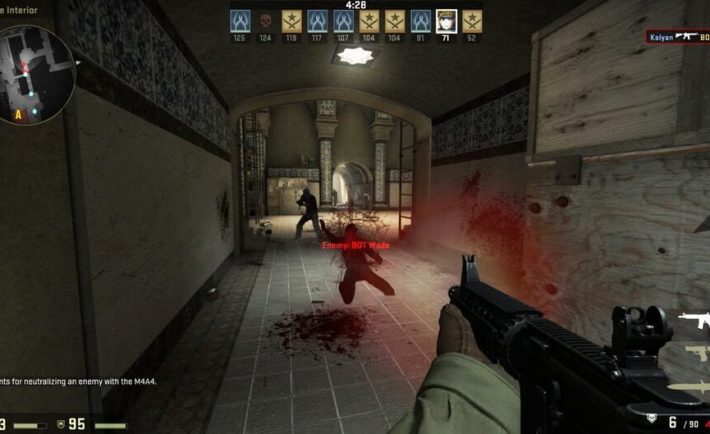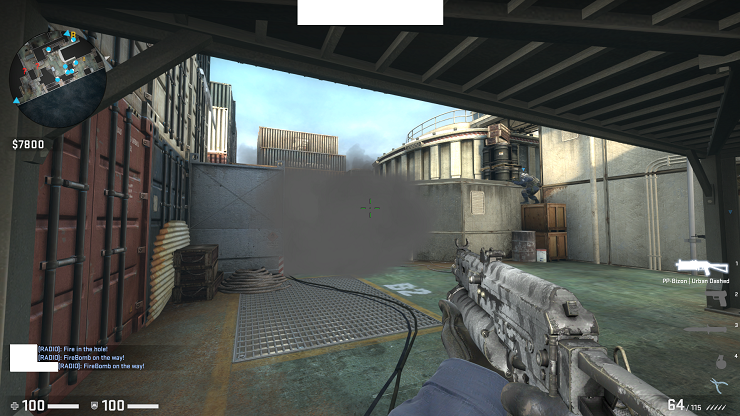
New players who are jumping into the action of CS: GO may initially see the game as a shooter that involves spraying bullets all over the place in an attempt to take down your opponent. Although that might be true for some games, CS: GO is so much more than that, especially once you realise the extent of the maps, weapon diversity, the impact of the CS: GO community and the strategies available.
Counter-Strike: Global Offensive is no easy beast to tame, but with some of our tips, even the most inexperienced players can get to grips with how to play. You never know, even advanced players might learn a thing or two!
Understanding matches and rounds
To begin a match, players select either CT or T as their team. Players go different paths with each entering a spawn zone phase, one team comes out victorious.
For a match to be won, a team must win 16 rounds. Overtime is initiated if each team wins 15 rounds, this is only applicable to esports competitive games, not casual CS: GO matches which consist of fewer rounds.
In-Game transactions and weapons like no other!
There are a considerable amount of weapons available in CS: GO, and every gun offers its own unique capabilities. To get used to them, it’s worth trying each one for yourself.
To begin with, a gun that packs some epic power is the AWP, but the issue is having to reload again after every round.
For a spray of bullets, you might look to the M4A4 or the AK-47, both have fantastic accuracy and low recoil rates – each requires some getting used to though.
For more of a sniped approach, you’d consider the Negev, which is pretty heavy and restricts movements but delivers a great long-range approach. CS GO cases are also a great way of finding new weapons and skins, bringing more excitement into the action.
Whenever a match begins, players can purchase equipment and weapons for the game ahead. The first rounds see teams having an identical pot of money, but can only buy pistols to begin with. As they progress through defusing
At the start of the game rounds, players have time for buying weapons and equipment. This transactional system forms the basis for First, both teams have the same amount of money, and they can purchase only pistols for the first round.
Then killing, planting or defusing the bomb, winning and even losing a round brings money to teams. How will they use these funds?
The answer here is the basis for in-game economic strategies, which open additional possibilities for advanced teams – like buying only pistols to save money for the following rounds.
Why is CS: GO so successful?

The game came out back in 2012 and has followed in the successful footsteps of the other titles of the Counter-Strike franchise, and it competes against the likes of series like Rainbow Six Siege and Call of Duty.
Just pick up and play
Even players with no experience of shooter games can get straight into the action. There’s no worrying about hammering through environments, dealing with vehicles or character classes, all making it a straightforward game choice. The game builds with every play session, meaning you’ll gain experience from the moment you start playing.
The graphics are out of this world

Video games are continuously improving in their realism, and CS: GO is no exception. The CS: GO devs have clearly worked hard behind the scenes to immerse players in the gameplay to make the weapons, characters and surroundings as close to real-life as possible. The game differs from games like Fortnite with unrealistic cartoonish character designs and emotes, CS: GO brings a level of realism that is currently unmatched in a shooter. If Battle Royale matches are your thing, venture over to the Danger Zone!
The gameplay is hugely expensive.
With CS: GO players will continuously discover new depths of the game, meaning the more hours you put in, the more of the game you’ll uncover. Every map is different, and as there are lots of maps to select, it can provide countless hours of discovery time.




